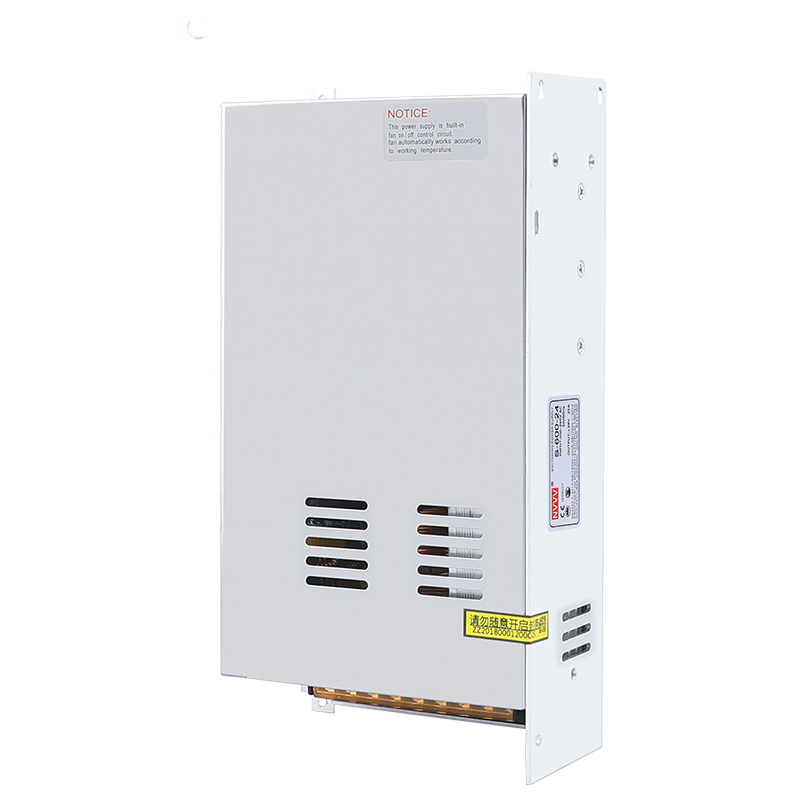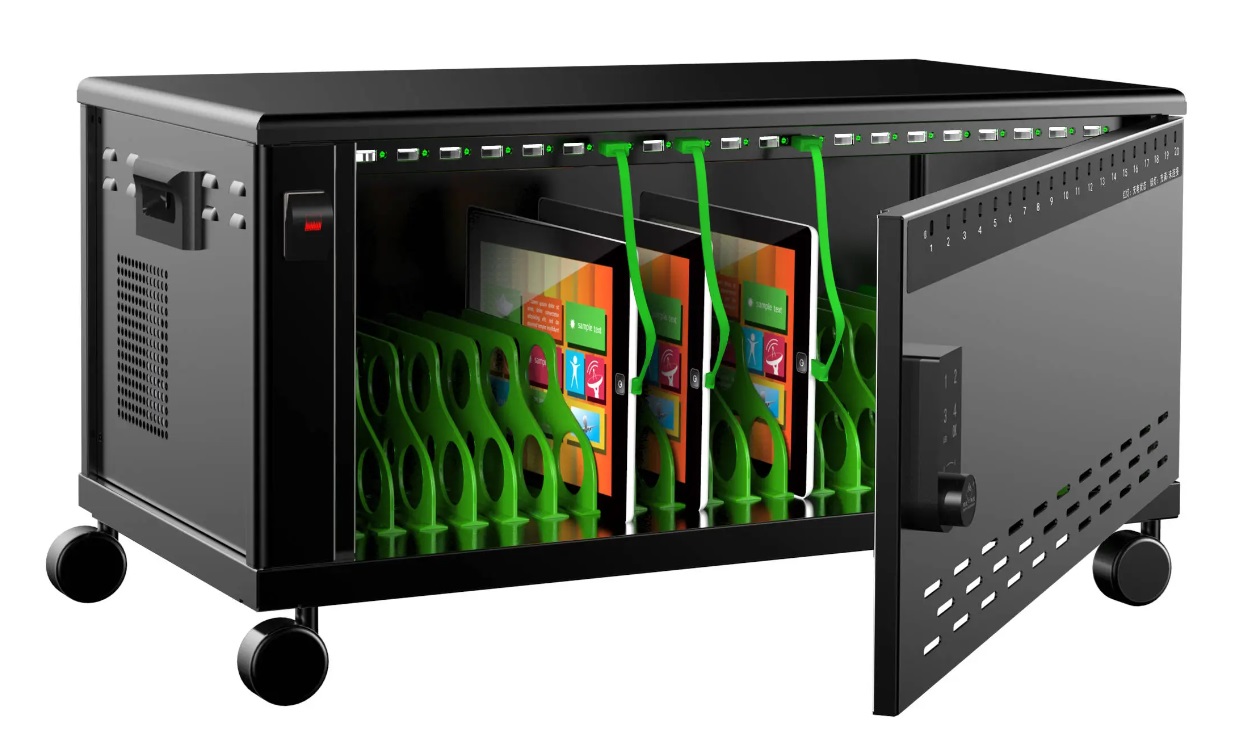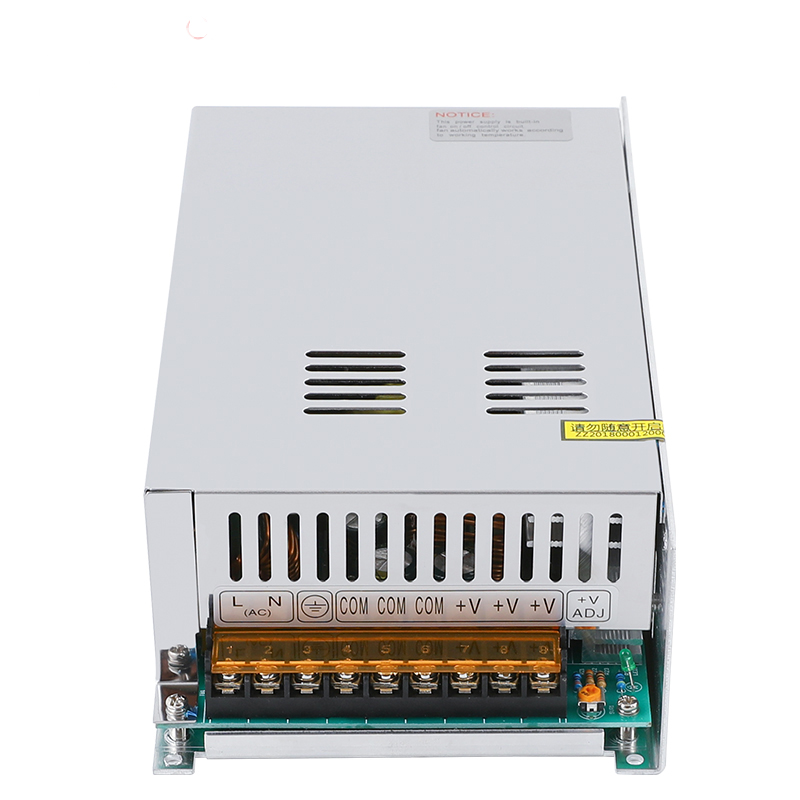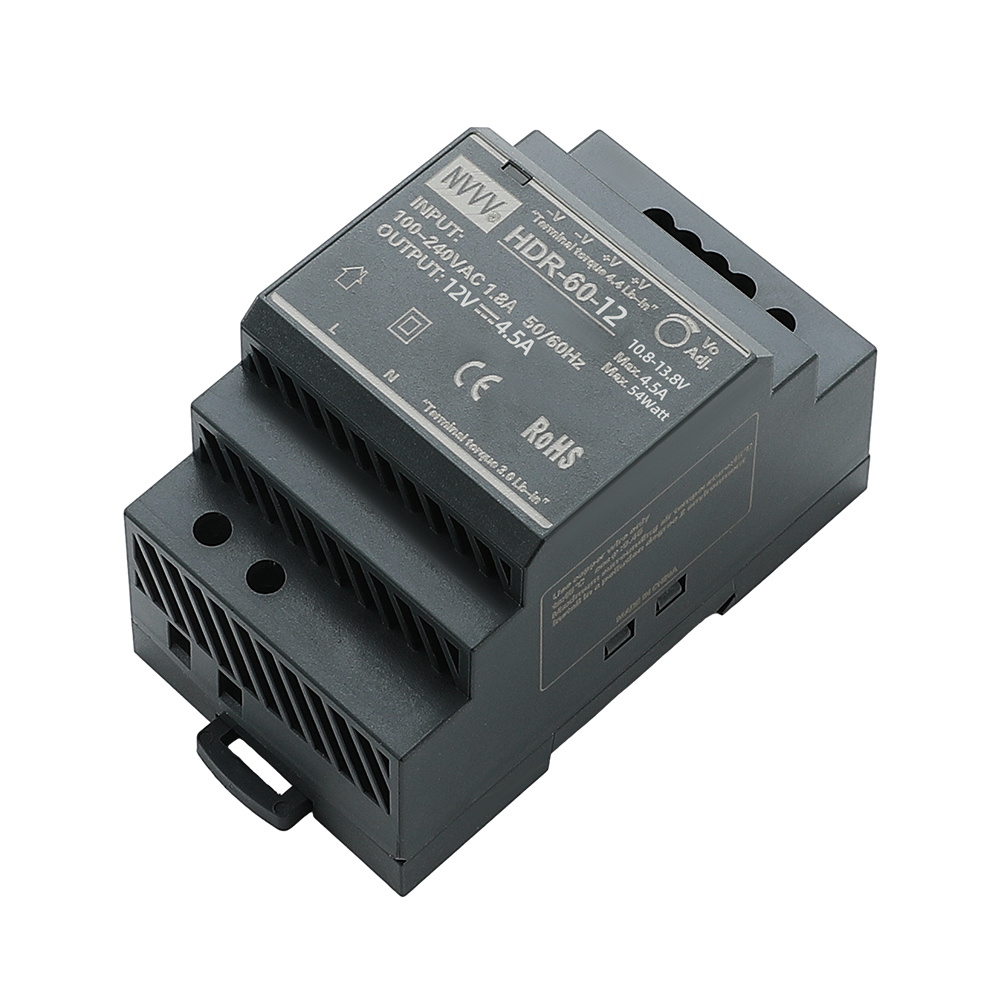Why is SMPS widely used in school network laptop charging cabinets?
With the continuous development of modern education, network laptops have become an important tool for students to learn. In order to ensure that these devices can be used normally in the classroom, schools are usually equipped with special charging cabinets for centralized management and charging. In these charging cabinets, the switch mode power supply (SMPS) has become a widely used core component. So why is SMPS so widely used in school network laptop charging cabinets? We will explore this phenomenon in detail through the following questions.
1. How does SMPS improve charging efficiency to meet the high demand of schools?
In modern educational environments, schools need to provide stable charging services for a large number of laptops, especially in some large schools or teaching environments where laptops are used frequently, charging efficiency is particularly important. One of the main advantages of the switching power supply (one of the 24v dc power supplies) is that it can greatly improve the charging efficiency, which is crucial for the application of school charging cabinets.
Advantages of high conversion efficiency
Traditional linear power supplies usually waste a considerable amount of power during the power conversion process due to heat generation and other losses. SMPS, on the other hand, efficiently converts the input AC power into DC power suitable for laptop charging through the action of high-frequency switching devices. Its conversion efficiency can usually reach between 85% and 95%, while the conversion efficiency of traditional linear power supplies is often only 60% to 70%. This high efficiency feature allows SMPS to use electrical energy more effectively when handling large-scale charging tasks, thereby reducing energy waste and reducing electricity costs.
Reduce heat generation and extend device life
Due to the high efficiency of SMPS, it generates relatively little heat during operation. When the equipment in the charging cabinet is running for a long time, if a lot of heat is generated, it will not only increase the difficulty of heat dissipation, but also may cause premature aging of internal electronic components. The low heat output characteristics of SMPS help to keep the temperature in the charging cabinet stable, thereby extending the service life of laptops and charging devices. For schools, this means reduced maintenance costs and longer reliable operation of equipment.
Quick response to charging needs
In the actual teaching process, students may charge their devices in different time periods, which requires the charging cabinet to respond quickly to the charging needs of large quantities of devices. The design of SMPS enables it to quickly adjust the output voltage and current when the load changes to meet the needs of different devices. For example, when multiple laptops are connected to the charging cabinet at the same time, SMPS can quickly identify and provide stable power to ensure that each device can obtain balanced and sufficient current. This rapid response capability is of great advantage for the daily teaching arrangements of schools.
Energy saving and environmental protection
In the context of global advocacy of energy conservation and emission reduction, schools, as an important part of society, are also actively responding to the call for energy conservation. SMPS has become a representative of energy conservation and environmental protection due to its efficient power conversion and low energy consumption characteristics. The extensive use of SMPS in schools can significantly reduce overall power consumption and reduce carbon emissions. This not only complies with national and local environmental protection policies, but also establishes a good environmental protection image for schools.
2. How does the safety of SMPS ensure the safety of students and equipment?
In a school environment, safety is always the primary consideration. As a device that students use frequently in daily life, the safety of network laptop charging cabinets is directly related to the use experience of students and teachers and the normal operation of the equipment. In terms of design and application, switch mode power supply focuses on multi-level safety protection, making it an ideal choice for school charging cabinets.
Overload protection function
In schools, due to the large number of devices in use and concentration, instantaneous overload may occur during charging. Overload not only affects charging efficiency, but also may damage charging equipment or laptops. The built-in overload protection function of SMPS can effectively prevent this from happening. When the load exceeds the set safety range, the SMPS will automatically reduce the output power or even cut off the power supply to prevent the device from being damaged due to overload. This overload protection mechanism greatly improves the safety of the system and ensures that the power system can still operate stably when multiple devices are charged at the same time.
Overheat protection mechanism
In addition to overload protection, SMPS also has an overheat protection function. Because power equipment will generate a certain amount of heat inside when it is running for a long time. If it is not controlled, the accumulation of heat may cause damage to components and even cause a fire risk. The overheat protection mechanism of SMPS can monitor the internal temperature in real time. When the temperature exceeds the safety threshold, it automatically adjusts or shuts down the power output until the temperature returns to normal. This self-protection ability not only ensures the safe operation of the equipment, but also reduces the risk of accidents caused by overheating.
Stable output voltage and current
Students and teachers have different laptop models and different requirements for charging voltage and current. If the charging voltage is too high, it may damage the battery; if the voltage is too low, it will affect the charging efficiency or even fail to charge normally. SMPS can automatically adjust the output voltage and current according to the connected device to provide a stable and suitable power supply. This not only ensures the charging safety of the device, but also extends the battery life and avoids hardware damage caused by unstable voltage.
Short-circuit protection and anti-electric shock design
In daily use in schools, charging cabinets may experience students frequently plugging and unplugging chargers, which increases the risk of short circuits and electric shocks. The short-circuit protection function of SMPS can quickly cut off the power supply when a short circuit occurs to prevent excessive current from burning the equipment or causing electric shock to personnel. In addition, SMPS usually has a good electrical isolation design, which can prevent the current from directly contacting the user even in unexpected situations, greatly reducing the incidence of electric shock accidents.
Electromagnetic interference (EMI) control
In a campus environment, electromagnetic interference not only affects the normal operation of other electronic devices, but may also have potential effects on students' health. SMPS is usually designed with good electromagnetic shielding and filtering functions, which can effectively suppress the generation of electromagnetic interference and ensure that there will be no adverse effects on other devices during the charging process. This electromagnetic interference control capability makes SMPS more suitable for use in campus environments, ensuring the health and safety of teaching equipment and teachers and students.
3. How does the flexibility of SMPS adapt to the needs of different schools?
Different schools have different needs for network laptop charging cabinets due to differences in size, teaching methods and equipment types. The flexibility of switched-mode power supply enables it to adapt to a variety of different school needs, making it widely used in school network laptop charging cabinets.
Modular design, flexible configuration
SMPS usually adopts modular design, which means that schools can flexibly configure the power modules of the charging cabinet according to actual needs. For example, a small-scale school may only need to charge dozens of laptops, while a large school may need to charge hundreds of devices at the same time. The modular design allows schools to add or reduce power modules at any time according to the changes in the number of devices, thus avoiding waste of resources. At the same time, the modular design also facilitates the maintenance and upgrade of the equipment. When a module fails, it can be replaced separately without affecting the operation of the entire system.
Support multiple voltages and device compatibility
Laptops of different brands and models may have different voltage requirements, which requires the charging cabinet to have a certain degree of compatibility. The output voltage range of SMPS can usually be adjusted according to demand to meet the requirements of different devices. This compatibility greatly facilitates the school's management of various types of laptops, without the need to configure different chargers for each device, simplifying the management process and reducing the cost of equipment procurement.
Intelligent control, simplified management
With the development of information technology, more and more schools are beginning to introduce intelligent management systems. SMPS can be seamlessly connected with the intelligent control system to remotely monitor and control the operating status of the charging cabinet through the network. Administrators can view the usage, power status and device health of each charging port in real time, and can even set functions such as timed charging or remote power off. This intelligent management not only improves the efficiency of the use of charging cabinets, but also reduces the workload of managers, making campus management more efficient and scientific.
Adapt to different environmental conditions
The teaching environment of the school varies. Some charging cabinets may need to be placed in indoor environments such as classrooms and libraries, while others may need to be placed in places with large temperature and humidity changes such as laboratories and gymnasiums. SMPS has strong environmental adaptability and can maintain a stable working state regardless of high or low temperature environments. In addition, SMPS usually has a certain dust and moisture-proof design to ensure long-term stable operation even in harsh environments
Scalability to meet future needs
With the continuous advancement of technology and changes in education methods, the demand for equipment in schools is also growing. Today's schools may only need to provide charging for laptops, but in the future there may be more types of electronic devices that need to be centrally managed and charged. The design of SMPS is highly scalable and can be upgraded and expanded according to changes in demand. For example, as new equipment is introduced, schools can easily add new charging modules or improve the intelligence level of the system through software upgrades. This scalability allows schools to respond calmly to future needs without completely replacing existing equipment, thus saving costs.
Comply with special standards in the education industry
The education industry has strict standards for the safety, reliability and environmental protection of equipment. SMPS usually meets or exceeds these standards during the design and manufacturing process to ensure that its application in the school environment is safe and reliable. For example, switching mode power supply often passes various international and regional safety certifications, such as CE, UL, CCC, etc., to ensure that its use worldwide complies with local regulatory requirements. In addition, the design of SMPS also takes into account the environmental protection needs of the education industry, using lead-free processes and environmentally friendly materials to reduce the impact on the environment. This high degree of compliance with standards and regulations makes SMPS more widely used and popular in the field of education.
Provide a variety of customized services
Schools may have some specific needs when choosing charging cabinets, such as customized voltage output, specific size equipment, and even appearance designs with school logos. The flexibility of SMPS enables manufacturers to provide highly customized services based on the special requirements of schools. This not only meets the functional needs of the school, but also enhances brand recognition and improves the overall image of the school. For example, some schools may want to add anti-theft functions to the charging cabinet, or add specific management software to the intelligent control system. SMPS can meet these needs in a customized way.
Conclusion
In summary, the reason why SMPS is widely used in school network laptop charging cabinets is that it has significant advantages in charging efficiency, safety, flexibility and scalability. By improving energy efficiency, reducing operating costs, providing multi-level security protection, and adapting to diverse needs, switched mode power supply provides schools with a reliable, efficient and intelligent charging solution. In addition, the environmentally friendly design and industry-compliant features of SMPS make it an ideal choice in modern educational environments.










